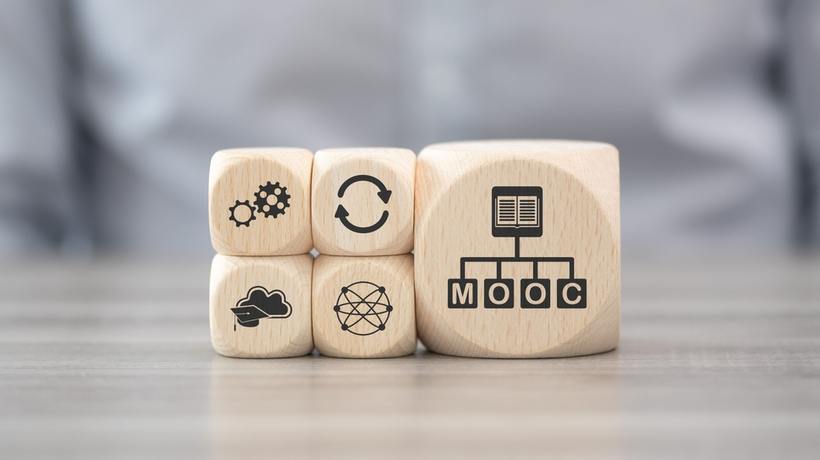Knowing Your Audience Helps To Shape The Process
Mapping learner personas is a trending topic in recent years, yet many Learning and Development (L&D) professionals still are hesitant to invest the time to study and develop them. Instead of trying to make technologies and processes work for each learner, organizations often try to fit learners into their status quo. While this hardline approach can drive some success, it fails to address the varying needs and preferences of each learner and support a culture of learning. Human beings are complex, and while there are broad similarities, each learner can't be expected to thrive under the same predefined tech platforms and processes.
To develop strategies that work for everyone, there must be an understanding of who "everyone" really is. Having a deep understanding of who they are and how they operate is critical to truly understanding their needs. Developing three to five learner personas that act as detailed "summaries" of the different types of learners found in an organization helps to gain that understanding. When utilized properly, these personas provide several benefits in addition to the higher level of awareness they naturally bring.
Learner Persona Examples
Here are a few simplified examples.
“Kim”
- Age: 49
- Job Role: Manager
- Level of Education: Bachelor's degree
- Learning Preference: Independent research on the topic, person-to-person instruction
- Goals: To improve her skills and advance in her career
- Motivations: Skills development, career advancement, personal satisfaction
- Barriers to Learning: Limited time and resources, competing priorities
“Juanita”
- Age: 27
- Job Role: Specialist
- Level of Education: Master's degree
- Learning Preference: Independent research on the topic, short videos
- Goals: To improve her skills and advance in her career
- Motivations: Skills development, career advancement, personal satisfaction
- Barriers to Learning: Limited time and resources, competing priorities
“Mike”
- Age: 62
- Job Role: Technician
- Level of Education: High school diploma
- Learning Preference: Person-to-person instruction, experiential learning
- Goals: To gain efficiencies, refine his skills
- Motivations: Gain efficiency, personal satisfaction
- Barriers to Learning: Limited time and resources, competing priorities, validating that the training is a reputable source with viable information
Why Creating Learner Personas Is Important
1. Increases Engagement And Knowledge Retention
This user-centric approach delivers relevant learning content at the right time and place. This type of personalization is potentially much more valuable for the learner. In today's world where instant gratification is expected, it's crucial to capitalize on the moment of need for learning. Providing behavioral nudges for them to engage in learning is a modern approach to learning strategy. This is an important aspect to pay attention to when selecting an LMS. Applying learner personas to key features necessary helps to quickly identify the technologies that meet the needs of each persona and the people they represent.
2. Reduces Turnover By Setting Employees Up For Success
Delivering the right content at the right time and place not only sets employees up for success by increasing engagement and knowledge retention, but also by showing them that their personal growth and development are important, valued, and prioritized by their employer. According to a LinkedIn study, approximately 94% of employees would stay at their company longer if the company invested in their professional development. But, without an effort to personalize the learning experience, demonstrating this investment can be a futile effort. The user-centric approach can help make an individual feel that the training they received was truly designed with them and their best interests in mind.
3. Creates A Habit Of Prioritizing Learner Needs
Frequently referencing these learner personas can help keep the real people they represent at the heart of each learning objective. Remember that these people have varying needs, goals, and motivations that drive their behaviors. Some learning leaders treat learner personas as a one-and-done tool, only used as a starting point for developing strategy. Once they get the ball rolling, the personas take an unfortunate backseat to the tactics. While creating personas is a great way to kick-start a learning program, not updating (and frequently referencing) them stifles their potential. Each new learning initiative should address learner needs and drive the desired results. Feedback from learners can help ensure this as well, but without personas, it may be challenging to sleuth out the most effective, efficient, and reliable ways to solicit that feedback.
4. Reduces Inaccurate Or Unfair Assumptions
It can be very easy and often instinctual to make assumptions when developing strategies. For example, one easy assumption to make is that all learners in a given organization typically complete their training at their desks during work hours. When learner personas are present, questions such as "Is that how Sally from the sales team prefers to learn?" may arise and offer new information to consider. It's important to have multiple personas (three to five is recommended) with varying characteristics, like backgrounds, job titles, education levels, career goals, abilities, temperament, motivations, physical locations, places they typically go to seek information, etc. These variables help to ensure that learning programs are well rounded and designed to educate, engage, and empower every learner.
Reminder: Try to avoid unfair assumptions when developing personas. Directly speaking with learners across an organization can help to reduce stereotyping and unfair assumptions in the creation of personas, which will ultimately help to reduce unfair assumptions in the creation of learning programs and strategies.
5. Provides A Reference Point For Improvements
Assessing learning strategies and making improvements can be a bewildering process. Part of that process should include obtaining feedback from stakeholders, especially feedback from learners. Turning that feedback into actionable items is easier when there is a solid understanding of the learner personas and the people they represent. There are numerous avenues for feedback, such as survey responses, listening sessions, and video coaching assignments. These channels can shed some light on which areas need improvement, whether that is focused on content, design, environment, or overall strategy. On its own, this type of feedback might not be as cut and dried as one would hope. But, paired with thoughtful learner personas, it can illustrate why learners raise specific issues and help troubleshoot the results. The puzzle pieces begin to connect and reveal the complete picture.
Conclusion
To get the most out of learner personas and reap the aforementioned benefits, the personas should feel real. Bring the personas to life by giving them names and faces. Use their names when referring to them and treat them as if they are actual employees. Doing so allows for a more targeted approach that addresses specific needs and challenges rather than a generic, impersonal, and monolithic approach.
Although even the most carefully crafted personas cannot perfectly represent every learner, they can help to get into the minds of different learners, consider new and different perspectives, and remind leaders that there is no one-size-fits-all approach to Learning and Development.









